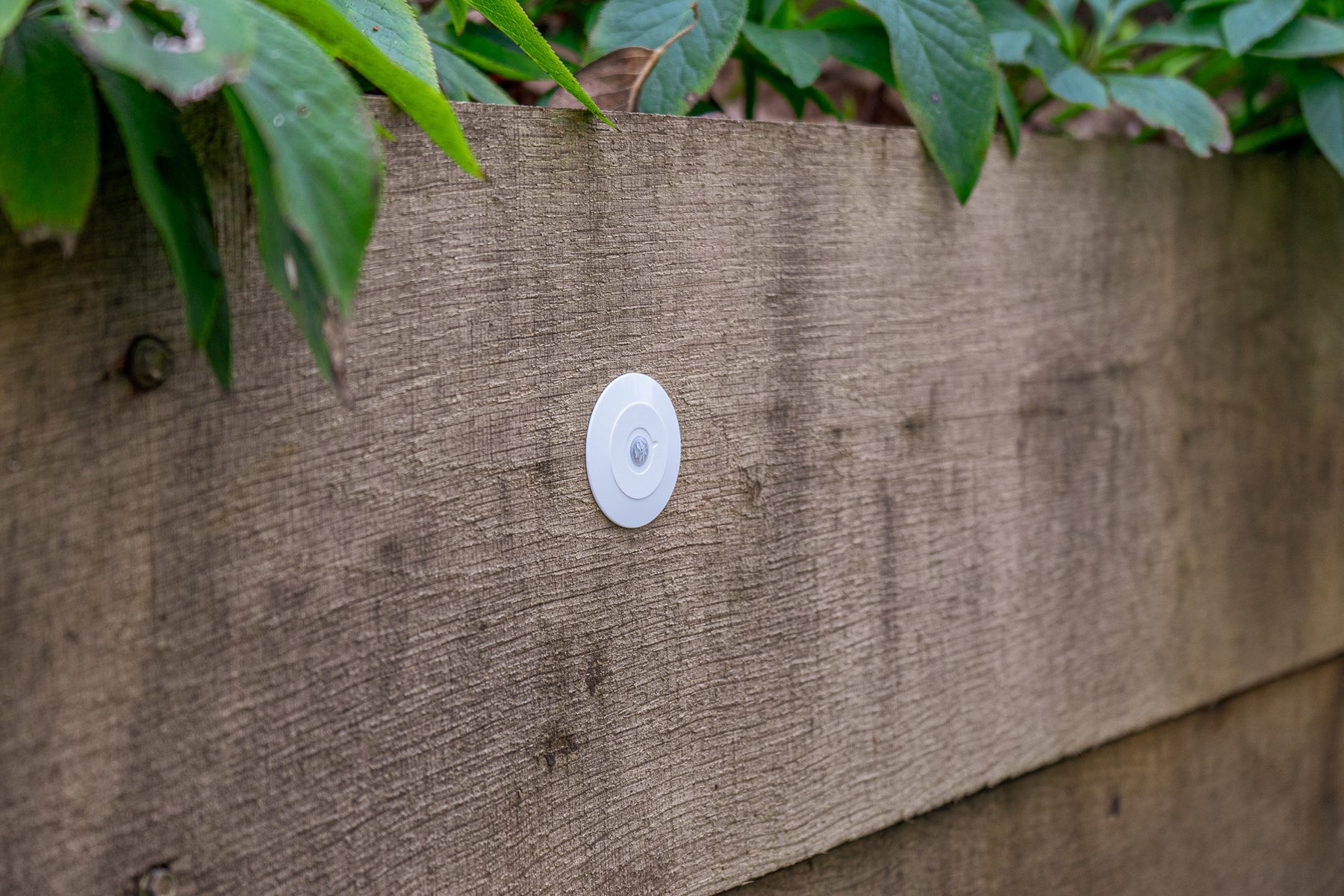
Installing the Motion Sensor 360 range vertically - What to consider
If you already install the Faradite Motion Sensor 360s you will know just how small and discreet they are. With the visible front of the sensor just 49mm diameter and extruding only 3mm the Faradiite Sensors lend themselves to many applications.
A question that is quite often asked is “can I install the sensor in a wall?”
Well, the short answer is ‘yes’ but there are a few things that should be considered when doing so and we are going to cover them in this blog.
Placement planning
The first thing to consider when deciding where to physically install the sensors is the detection zone of the sensors. The detection area across the range varies slightly but the thing to consider is the 3 dimensional shape of the detection zone. To do this, imagine a cone shape emitting from the sensor.

When installed in a ceiling, the detection zone is measured at floor level and our data sheets provide detection zones for 2.5m ceiling height and a 3m ceiling height.
Depending on where on the vertical wall the sensor is mounted, consider that some of the detection ‘cone’ might be cut off by other walls, ceiling or floors. Also it should be noted that if the sensor is mounted high on a wall, any person walking close to the wall may not be detected even if directly under the sensor.

Also consider that the conical shape of the detection zone will mean that a person may be detected if further away from the wall on which the sensor is mounted as seen in the image below.

Mounting Height
For most applications we would recommend mounting the sensor at waist height, as you can see from the illustration below a person will reliably trigger the sensor’s detection cone. If the sensor is mounted higher or lower than waist height then consider how the area the detection cone will cover will be altered.

Sensitivity
A PIR sensor detects the movement of heat between beams, so more thought needs to be given to the sensor placement when being installed vertically. For example - if the sensor is installed vertically in a wall and a person were to approach it walking front on towards the sensor front (ie. not across the beam pattern) the sensor wont sense a big enough change in heat pattern movement between beams and therefore won't trigger reliably.
But if a person was to walk across the beams then the sensor would trigger reliably. The range of the sensor also needs to be considered as if the person is outside the range then the sensor will not trigger reliably.

Also, the further away from the sensor the person is, the less sensitive the sensor will be as the beam pattern is less dense. If the person is close to the sensor, a tiny movement will trigger the sensor (assuming they are in the beam pattern), however when further away from the sensor the user may need to move more to make the sensor trigger.
These considerations should be made to ensure the sensor performs as required but, where possible, we advise on testing the sensor location before committing to final sensor placement.
Installation
In terms of physical installation into a vertical setting, the same approach should be taken - terminate the cables into the connector, retract the springs and slot back into the hole. It is also possible to remove the springs and push the sensor back into an opening if the wall is too thick for the springs to get behind. In this situation; we recommend using silicon to hold the sensor in place.
Other considerations
When installing sensors vertically there are considerations that should be made that are different from ‘standard’ installation in horizontal surfaces such as ceilings.
Obstructions - in certain horizontal installations it is quite possible that someone may place an object that obstructs the sensor e.g. a wheelie bin in an outside alleyway. Make sure that users are aware of sensors and their use and where possible avoid installation locations that might be obstructed.
Animals/wildlife - when installing sensors low down on vertical surfaces be aware of small animals that may move in front of the sensor causing it to trigger.
Water - If installing a sensor vertically in an exposed outdoor space (IP67 version only) there is a small chance that rain water may hit the sensor directly and cause a detection if the rain drop is big enough. If possible install in sheltered/covered spaces where rain water will not directly affect the sensor.
This information should allow you to confidently plan any vertically mounted motions sensors in your next project. As ever, if you have any more questions please feel free to contact the Faradite team.

